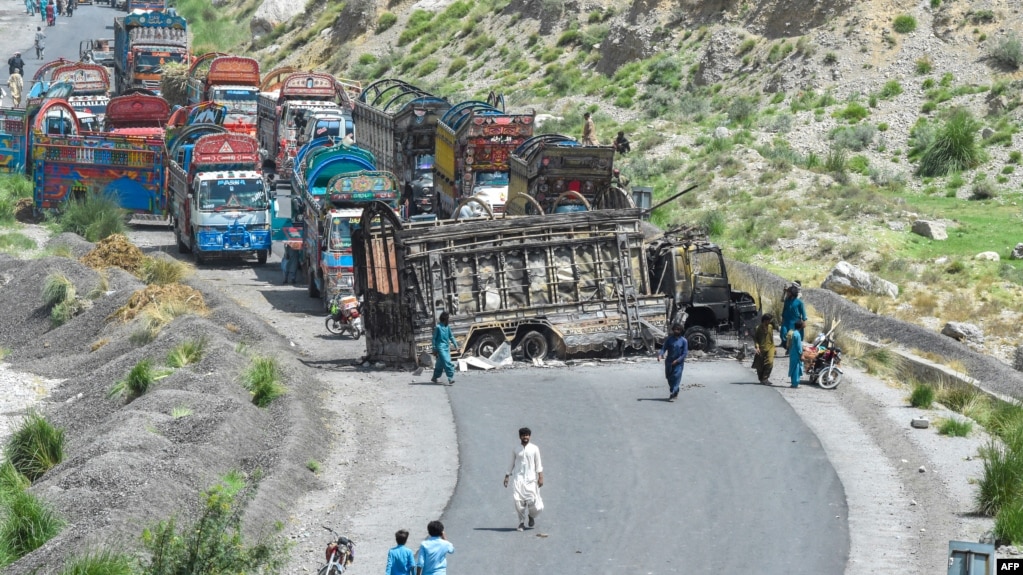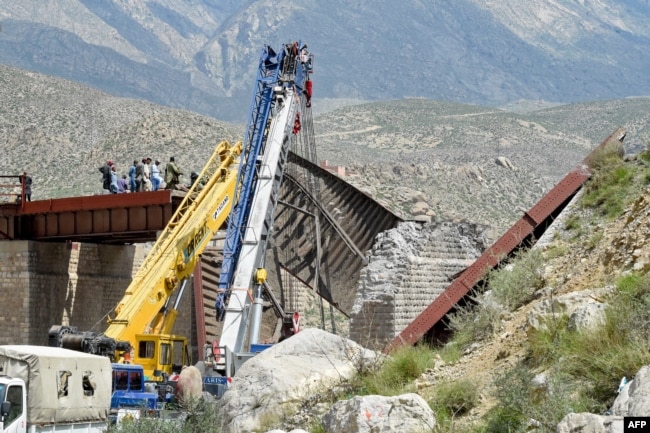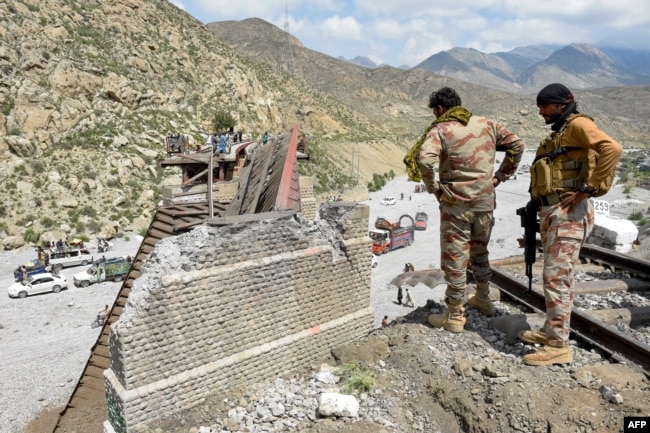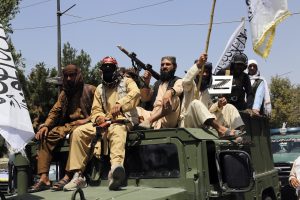Three years into its rule, the movement has codified its harsh Islamic decrees into law that now includes a ban on women’s voices in public.
THEY NEED A WOMENS ARMED UPRISING

By Christina Goldbaum and Najim Rahim
Sept. 4, 2024
No education beyond the sixth grade. No employment in most workplaces and no access to public spaces like parks, gyms and salons. No long-distance travel if unaccompanied by a male relative. No leaving home if not covered from head to toe.
And now, the sound of a woman’s voice outside the home has been outlawed in Afghanistan, according to a 114-page manifesto released late last month that codifies all of the Taliban government’s decrees restricting women’s rights.
A large majority of the prohibitions have been in place for much of the Taliban’s three years in power, slowly squeezing Afghan women out of public life. But for many women across the country, the release of the document feels like a nail in the coffin for their dreams and aspirations.
Some had clung to the hope that the authorities might still reverse the most severe limitations, after Taliban officials suggested that high schools and universities would eventually reopen for women after they were shuttered. For many women, that hope is now dashed.
“We are going back to the first reign of the Taliban, when women did not have the right to leave the house,” said Musarat Faramarz, 23, a woman in Baghlan Province, in northern Afghanistan, referring to the movement’s rule from 1996 to 2001. “I thought that the Taliban had changed, but we are experiencing the previous dark times again.”
Since the Taliban regained power in August 2021, the authorities have systematically rolled back the rights that women — particularly those in less conservative urban centers — had won during the 20-year U.S. occupation. Today, Afghanistan is the most restrictive country in the world for women, and the only one that bans high school education for girls, experts say.

The publication of the regulations has ignited fears of a coming crackdown by emboldened officers of the so-called vice and virtue police, the government officials who don white robes and are stationed on street corners to ensure that the country’s morality laws are observed.
The manifesto defines for the first time the enforcement mechanisms that can be used by these officers. While they have frequently issued verbal warnings, those officers are now empowered to damage people’s property or detain them for up to three days if they repeatedly violate the vice and virtue laws.
Before the announcement of the laws, Freshta Nasimi, 20, who lives in Badakhshan Province in northeastern Afghanistan, had held on to any shred of hope she could find.
For a while, she was sustained by a rumor she heard from classmates that the government would broadcast girls’ schooling over the television — a concession that would allow girls to learn while keeping them in their homes. But that dream was snuffed out after the authorities in Khost Province, in the country’s east, banned such programs from the airwaves earlier this year. That signaled that other parts of the country could implement similar bans.
Now, Ms. Nasimi says, she is trapped at home. The new law barring women’s voices — they are considered an intimate part of a woman that must be covered — effectively ensures that she cannot leave the house without a male relative. She worries that no taxi driver will speak with her, for fear of being reprimanded by the Taliban, she said, and no shopkeeper will entertain her requests.

She has accepted that her aspirations of becoming an engineer — with the steady income and freedom it would bring — are finished.
“My future?” she asked, resigned. “I don’t have a future except being a housewife and raising children.”
The publication of the vice and virtue laws, analysts say, is part of a governmentwide effort to codify the workings of every ministry to ensure they adhere to the extreme vision of Shariah law institutionalized by the Taliban’s leader, Sheikh Haibatullah Akhundzada. The document is also, analysts say, intended to stamp out any Western principles of the U.S.-backed government that ran Afghanistan before the Taliban’s return to power.

Loss Piles on Loss for Afghan Women
The Taliban’s takeover ended decades of war. But their restrictions, and the economic fallout, threw many women into a new era of diminished hopes.
The Taliban have forcefully rejected outside pressure to ease the restrictions on women, even as the policies have isolated Afghanistan from much of the West. Taliban officials defend the laws as rooted in the Islamic teachings that govern the country. “Afghanistan is an Islamic nation; Islamic laws are inherently applicable within its society,” the spokesman for the government, Zabiullah Mujahid, said in a statement.
But the regulations have drawn widespread criticism from human rights groups and the United Nations mission in Afghanistan. The mission’s head, Roza Otunbayeva, called them “a distressing vision for Afghanistan’s future” that extends the “already intolerable restrictions” on women’s rights.
Even visual cues of womanhood have been slowly scrubbed from the public realm.
Over the past three years, women’s faces have been torn from advertisements on billboards, painted over in murals on school walls and scratched off posters lining city streets. The heads of female mannequins, dressed in all-black, all-concealing abayas, are covered in tinfoil.

Even before the new manifesto, the threat of being reprimanded by the vice and virtue police lingered in the air as women were barred from more and more public places.
“I live at home like a prisoner,” said Ms. Faramarz, the woman from Baghlan. “I haven’t left the house in three months,” she added.
The reversal of rights has been perhaps the hardest for the girls who came of age in an era of opportunity for women during the U.S. occupation.
Some girls, determined to plow ahead with their education, have found ad hoc ways to do so. Underground schools for girls, often little more than a few dozen students and a tutor tucked away in people’s private homes, have cropped up across the country. Others have turned to online classes, even as the internet cuts in and out.
Mohadisa Hasani, 18, began studying again about a year after the Taliban seized power. She had talked to two former classmates who were evacuated to the United States and Canada. Hearing about what they were studying in school stoked jealousy in her at first. But then she saw opportunity, she said.
She asked those friends to spend an hour each week teaching her the lessons they were learning in physics and chemistry. She woke up for the calls at 6 a.m. and spent the days in between poring over photos of textbooks sent by the friends, Mina and Mursad.

“Some of my friends are painting, they are writing, they are doing underground taekwondo classes,” Ms. Hasani said. “Our depression is always there, but we have to be brave.”
“I love Afghanistan, I love my country. I just don’t love the government and people forcing their beliefs onto others,” she added.
The classes and artistic outlets, while informal, have given girls, especially in more progressive cities, a dose of hope and purpose. But the reach of those programs goes only so far.
Rahmani, 43, who preferred to go by only her surname for fear of retribution, said that she began taking sleeping pills every night to dampen the anxiety she feels over providing for her family.
A widow, Ms. Rahmani worked for nonprofit groups for nearly 20 years before the Taliban seized power, earning more than enough to provide for her four children. Now, she says, she not only cannot provide for them after women were barred from working for such groups — but she has also lost her sense of self.
“I miss the days when I used to be somebody, when I could work and earn a living and serve my country,” Ms. Rahmani explained. “They have erased our presence from society.”

Christina Goldbaum is the Afghanistan and Pakistan bureau chief for The Times, leading the coverage of the region. More about Christina Goldbaum
Najim Rahim is a reporter in the Kabul, Afghanistan, bureau. More about Najim Rahim
A version of this article appears in print on Sept. 5, 2024, Section A, Page 1 of the New York edition with the headline: Unspeakable New Suffering for Afghan Women
















